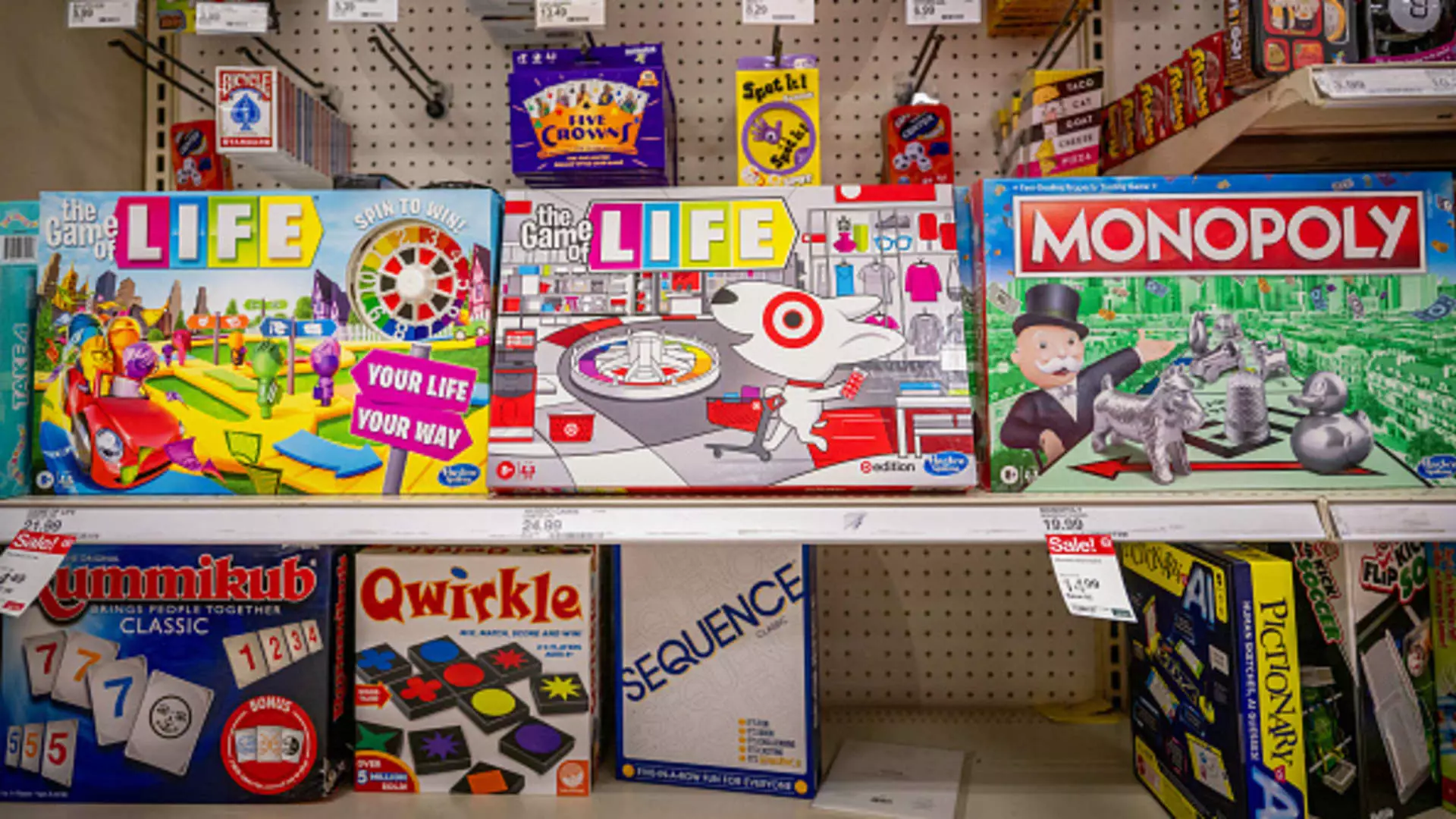The toy industry is in a precarious position as it struggles to navigate the tumultuous waters of ongoing trade wars and the looming threat of exorbitant tariffs. At the center of this storm is Hasbro, a titan in toy manufacturing that is now facing potentially devastating repercussions from President Trump’s aggressive tariff strategies against China. With a staggering 145% tariff on imports, predictions indicate that Hasbro could sustain losses of up to $300 million. This unsettling prospect exposes not only the vulnerabilities of a major corporation but also the broader implications for consumers and workers in the industry.
Financial Forecasts: A Balancing Act of Anticipation
While Hasbro released earnings that surpassed initial projections, the excitement was overshadowed by analysts’ focus on the volatile tariff landscape. Hasbro’s Chief Financial Officer, Gina Goetter, characterized the situation as one of uncertainty, presenting various scenarios from a modest 50% tariff to the astronomical 145%. Essentially, this unpredictability acts as a damper on strategic planning and puts the company’s entire enterprise at risk. According to their estimations, the gross impact could hit anywhere between $100 million and $300 million by 2025, a figure that looms large over future investments and growth.
What’s telling here is that while Hasbro strives to maintain its annual guidance amid such turbulent conditions, it also signals an alarming trend: corporations becoming increasingly wary of unstable political climates affecting their profitability. The caution shown indicates that simply exceeding quarterly expectations is no longer enough; companies must now grapple with a complex array of external factors that can alter their trajectory in seconds.
The Human Cost: Job Losses and Consumer Strain
Corporate executives often highlight their resilience in the face of challenges, and Hasbro’s CEO Chris Cocks does just that. He assures stakeholders that the company is “well positioned” to weather the storm. However, he also candidly admits that the reality of prolonged tariffs is detrimental for everyone involved. Job losses are not merely possibilities; they are potential realities as the company grapples with rising costs and dwindling profits. “Ultimately, tariffs translate into higher consumer prices,” he stated, sounding an alarm for not just shareholders but families who have come to rely on reasonable prices for leisure.
This potential cascade of job losses paints a grim picture, one where individuals are left to bear the brunt of political maneuvering on a global scale. Rather than focusing solely on bottom-line figures, it’s time we start considering how such corporate decisions impact everyday lives, children’s joy, and the continuity of livelihoods.
Supply Chain Dilemmas: Manufacturing Challenges in a Global Economy
The complexities of moving the supply chain away from China are immense. Though Cocks mentioned exploring manufacturing options in countries like Turkey, he acknowledged that the shift could also incur significant costs. The practical challenges of transitioning production facilities and maintaining the quality of products reveal an unsettling truth: for companies entrenched in a globalized economy, escaping reliance on low-cost labor is no easy feat.
What becomes questionable is whether these corporations are genuinely committed to ethical considerations or merely compelled to adapt due to external pressures. Sure, they can pivot product lines and explore domestic alternatives, but at what cost? For Hasbro, the toy segment appears to be particularly vulnerable due to its significant reliance on China. With board games and other products featuring components that are challenging to relocate, it raises the question—does the toy industry’s future hinge on a potentially dwindling relationship with China, or is it simply gambling on negotiation tactics that might prove ineffective?
The Pursuit of Cost Savings: Navigating Inflationary Pressures
To combat the impending financial strain of tariffs, Hasbro is accelerating its $1 billion cost-saving initiative, aiming to offset increasing production expenses. Yet, both Goetter and Cocks admit that unavoidable price hikes on toys are likely on the horizon. In this fast-approaching scenario, families who once found joy in affordable toys may soon confront the unfortunate reality of price inflation.
As the rhetoric of playing “both defense and offense” becomes the norm for companies like Hasbro, one must wonder whether our labor force can withstand the pressures of global tariff battles and fluctuating trade policies. The cost of play is evolving at an uncomfortable rate, risking the innocence of childhood joys for the sake of profit margins.
The path forward for Hasbro is uncertain but rife with complexities that demand deeper consideration from not only the boardroom but also consumers and policymakers alike. The ramifications of tariff-induced profit maneuvers extend far beyond the shelves of stores; they reach into the heart of communities and awaken questions about equity and opportunity in an interdependent world.

Leave a Reply